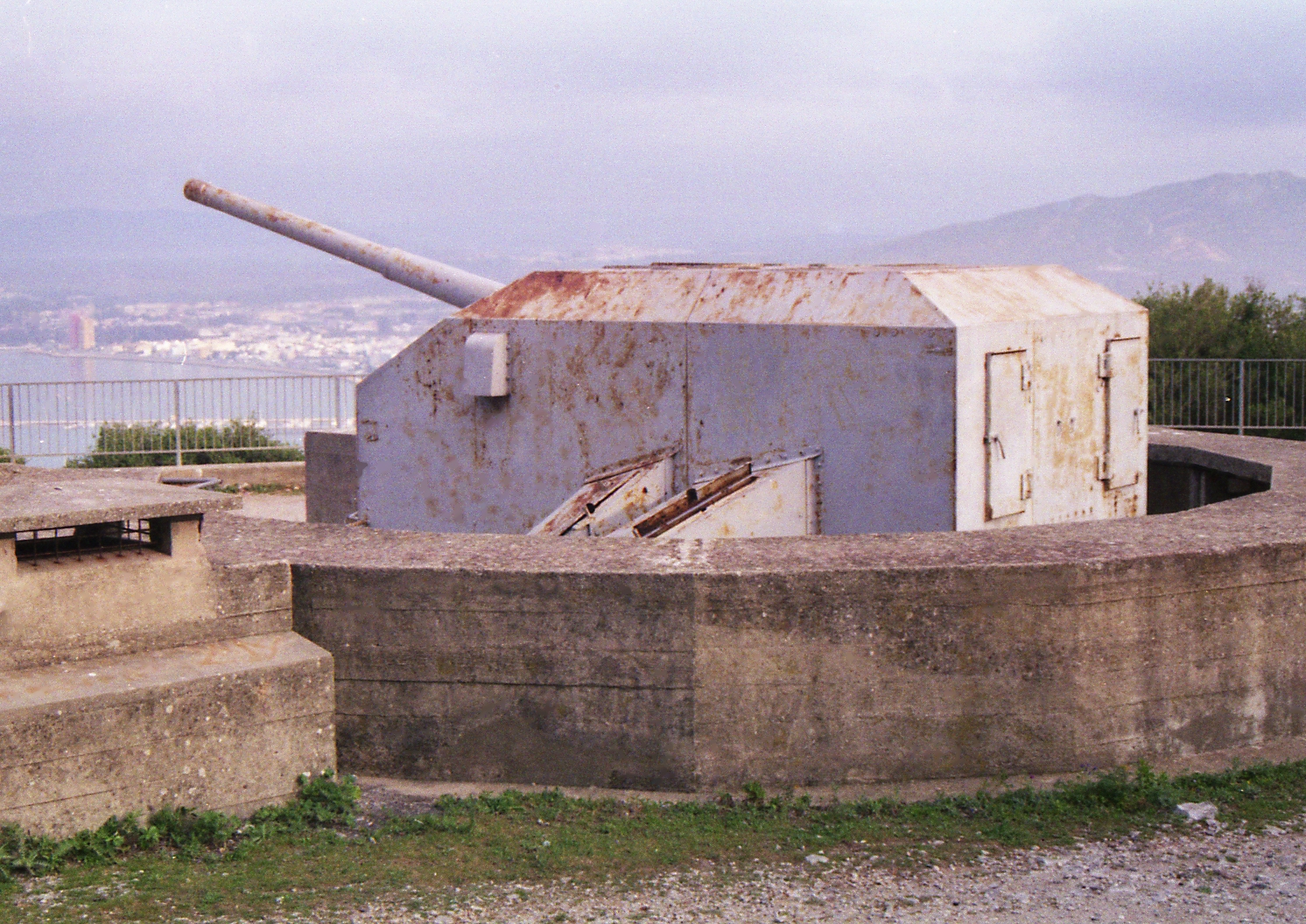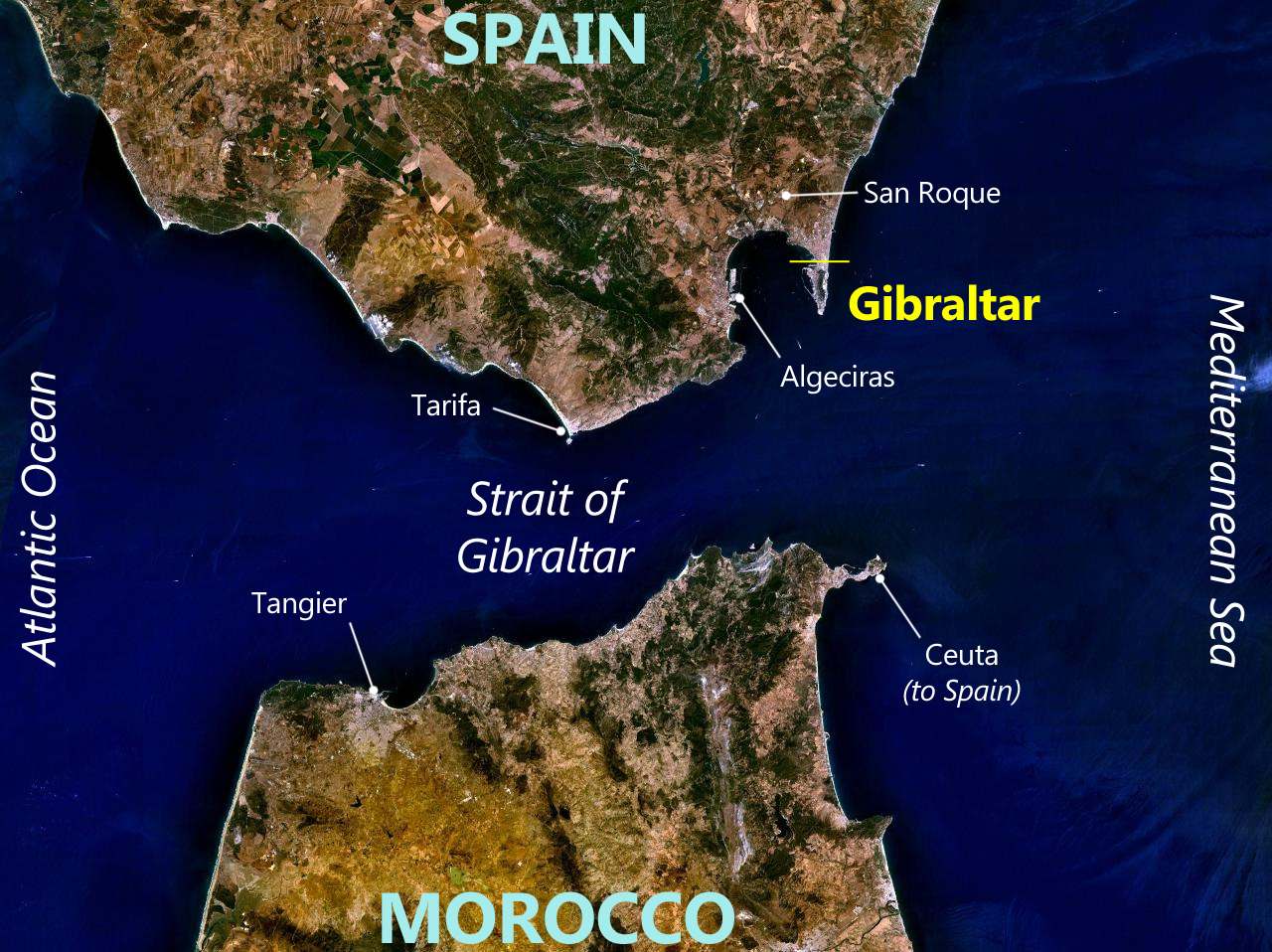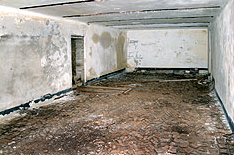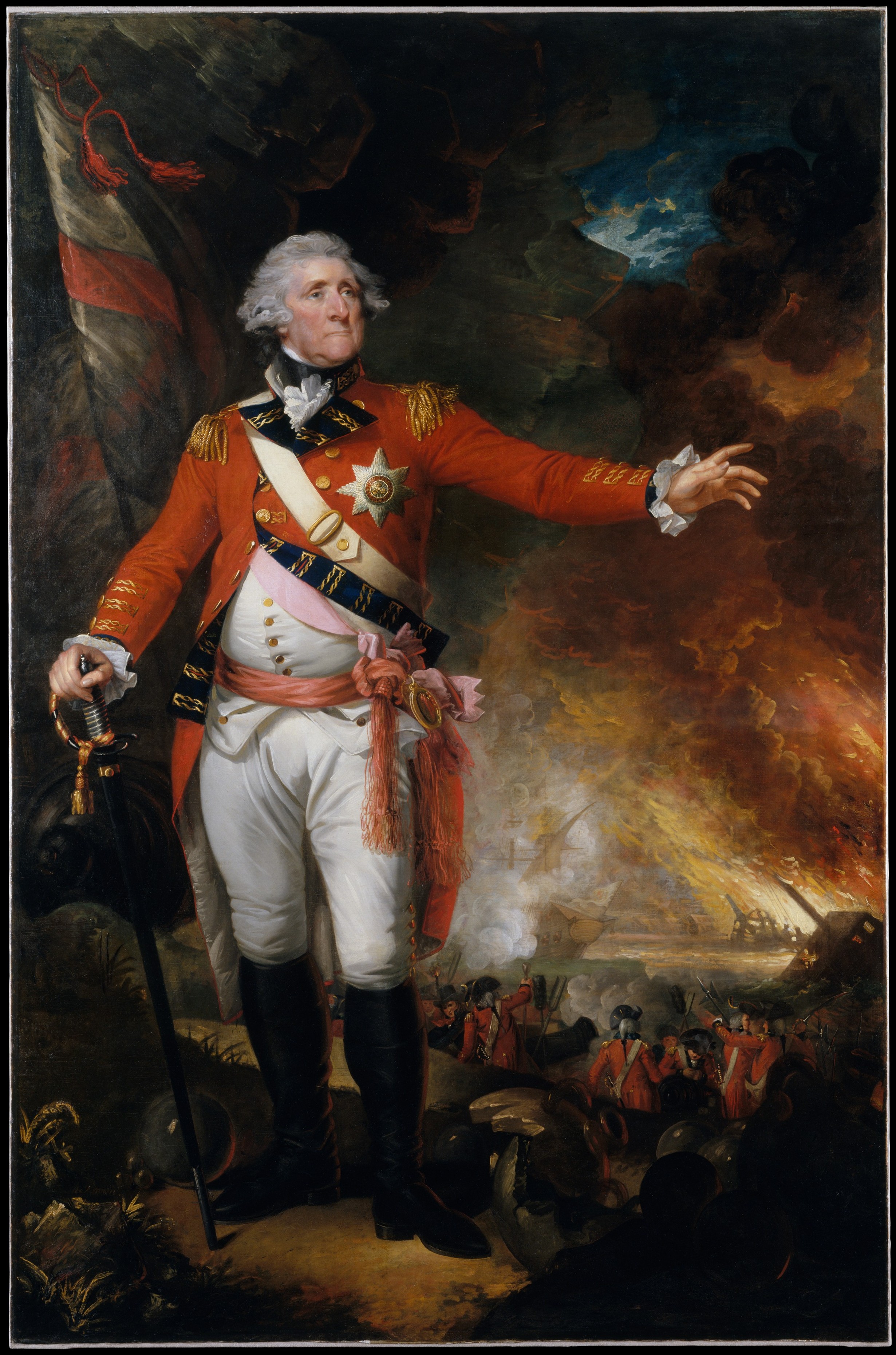|
Great Siege Tunnels
The Great Siege Tunnels in the British Overseas Territory of Gibraltar, also known as the Upper Galleries, are a series of tunnels inside the northern end of the Rock of Gibraltar. They were dug out from the solid limestone by the British during the Great Siege of Gibraltar of the late 18th century. History The Great Siege of Gibraltar was an attempt by France and Spain to capture Gibraltar from Great Britain during the American Revolutionary War. Lasting from July 1779 to February 1783, it was the fourteenth and final siege of Gibraltar. During the siege, British and Spanish forces faced each other across an approximately wide stretch of the marshy open ground that forms the isthmus immediately to the north of the Rock of Gibraltar. The British lines blocked access to the City and the western side of the Rock, while the eastern side of the Rock was inaccessible because of its steep terrain. Gun batteries were placed in a series of galleries on the north face of the Rock, ... [...More Info...] [...Related Items...] OR: [Wikipedia] [Google] [Baidu] |
Fortifications Of Gibraltar
The Gibraltar peninsula, located at the far southern end of Iberian Peninsula, Iberia, has great strategic importance as a result of its position by the Strait of Gibraltar where the Mediterranean Sea meets the Atlantic Ocean. It has repeatedly been contested between European and North African powers and has endured List of sieges of Gibraltar, fourteen sieges since it was first settled in the 11th century. The peninsula's occupants – Moors, Spain, Spanish, and United Kingdom, British – have built successive layers of fortifications and defences including walls, bastions, casemates, artillery battery, gun batteries, Magazine (artillery), magazines, Tunnels of Gibraltar, tunnels and Counterscarp#Counterscarp gallery, galleries. At their peak in 1865, the fortifications housed around 681 guns mounted in 110 batteries and positions, guarding all land and sea approaches to Gibraltar.#Hughes, Hughes & Migos, p. 91 The fortifications continued to be in military use until as late as ... [...More Info...] [...Related Items...] OR: [Wikipedia] [Google] [Baidu] |
Sledgehammer
A sledgehammer is a tool with a large, flat, massive, often metal head, attached to a long wooden or solid handle. The long handle is combined with a heavy head which allows the sledgehammer to pick up momentum during a swing and applying a large force compared to hammers designed to drive nails. Along with the mallet, it shares the ability to distribute force over a wide area. This is in contrast to other types of hammers, which concentrate gravity and force in a relatively small area. Etymology The word sledgehammer is derived from the Old-English "''slægan''", which, in its first sense, means "to strike violently". The English words "slag", "slay", and "slog" are cognates. Uses The handle can range from to a full long, depending on the mass of the head. The head mass is usually . Modern heavy duty sledgehammers come with heads. Sledgehammers usually require two hands and a swinging motion involving the entire torso, in contrast to smaller hammers used for driving in ... [...More Info...] [...Related Items...] OR: [Wikipedia] [Google] [Baidu] |
Sieges Of Gibraltar
There have been fourteen recorded sieges of Gibraltar. Although the peninsula of Gibraltar is only long and wide, it occupies an extremely strategic location on the southern Iberian coast at the western entrance to the Mediterranean Sea. Its position just across the eponymous Strait from Morocco in North Africa, as well as its natural defensibility, have made it one of the most fought-over places in Europe. Only five of the sieges resulted in a change of rule. Seven were fought between Muslims and Catholics during Muslim rule, four between Spain and Britain from the Anglo-Dutch capture in 1704 to the end of the Great Siege in 1783, two between rival Catholic factions, and one between rival Muslim powers. Four of Gibraltar's changes in rule, including three sieges, took place over a matter of days or hours, whereas several other sieges had durations of months or years and claimed the lives of thousands without resulting in any change in rule. Background Gibraltar is a Brit ... [...More Info...] [...Related Items...] OR: [Wikipedia] [Google] [Baidu] |
Searchlight
A searchlight (or spotlight) is an apparatus that combines an extremely luminosity, bright source (traditionally a carbon arc lamp) with a mirrored parabolic reflector to project a powerful beam of light of approximately parallel rays in a particular direction. It is usually constructed so that it can be swiveled about. The most common element used in modern searchlights is Xenon, Xenon (Xe). However, Rare-earth elements such as lanthanum, lanthanum (La) and cerium, cerium (Ce) are used in phosphors to improve light quality in some specialized searchlights. Military use The first use of searchlights using carbon arc technology occurred during the Siege of Paris (1870-71), Siege of Paris during the Franco-Prussian War. The Royal Navy used searchlights in 1882 to dazzle and prevent Egyptian forces from manning artillery batteries at Bombardment of Alexandria, Alexandria. Later that same year, the French and British forces landed troops under searchlights. By 1907 the value o ... [...More Info...] [...Related Items...] OR: [Wikipedia] [Google] [Baidu] |
Military History Of Gibraltar During World War II
The military history of Gibraltar during World War II exemplifies Gibraltar's position as a British fortress from the early-18th century onwards and as a vital factor in British military strategy, both as a foothold on the continent of Europe, and as a bastion of British sea power. During World War II, Gibraltar served a vital role in both the Atlantic Theatre and the Mediterranean Theatre, controlling virtually all naval traffic moving between the Mediterranean Sea and the Atlantic Ocean. In addition to its commanding position, Gibraltar provided a strongly-defended harbour from which ships could operate both in the Atlantic and in the Mediterranean. The Royal Navy's Force H, under the command of Vice-Admiral James Somerville was based in Gibraltar and had the task of maintaining naval superiority and providing a strong escort for convoys to and from the besieged island of Malta. During the course of the war, Gibraltar came under aerial bombardment from Vichy French ... [...More Info...] [...Related Items...] OR: [Wikipedia] [Google] [Baidu] |
Muzzle-loading Rifle
A muzzle-loading rifle is a Muzzleloader, muzzle-loaded Small arms and light weapons, small arm that has a rifled barrel rather than a smoothbore, and is loaded from the muzzle of the barrel rather than the breech. Historically they were developed when rifled barrels were introduced by the 1740ies, which offered higher accuracy than the earlier smoothbores. The American longrifle evolved from the German "Jäger (military), Jäger" rifle; a popularly recognizable form of the "muzzleloader" was the Kentucky Rifle. Although by definition they must be reloaded after each shot in a time-consuming fashion, they are still produced for hunting. Comparable artillery pieces are termed rifled muzzle loader (RML). Small arms Like most History of the firearm, early firearms, the first rifles were muzzle-loading, although this involved a lot of complication in inserting the bullet past the rifling, and clogging and cleaning problems were notorious. There are also muzzle-loading pistols and sh ... [...More Info...] [...Related Items...] OR: [Wikipedia] [Google] [Baidu] |
Upper Rock Nature Reserve
The Gibraltar Nature Reserve (formerly the Upper Rock Nature Reserve) is a protected area, protected nature reserve in the British Overseas Territories, British Overseas Territory of Gibraltar that covers over 40% of the territory's land area. It was established as the Upper Rock Nature Reserve in 1993 under the International Union for Conservation of Nature's category Ia (nature reserve, strict nature reserve) and was last extended in 2013. It is known for its semi-wild Barbary macaques in Gibraltar, population of Barbary macaques, and is an important resting point for bird migration, migrating birds. Location Originally named the Upper Rock Nature Reserve, it was limited to the upper part of the Rock of Gibraltar, a long and narrow limestone peninsula that rises to a height of above sea level. The Rock is part of the Betic Cordillera, formed about 200 million years ago. From the crest of the rock there is a dramatic view of the area, including Spain across the Bay of Gibralt ... [...More Info...] [...Related Items...] OR: [Wikipedia] [Google] [Baidu] |
George Augustus Eliott, 1st Baron Heathfield
General George Augustus Eliott, 1st Baron Heathfield, (25 December 1717 – 6 July 1790) was a British Army officer who served as the governor of Gibraltar from 1779 to 1790. Eliott rose to distinction during the Seven Years' War when he fought in Germany and participated in the capture of Belle Île and siege of Havana. He is most notable for his command of the Gibraltar garrison during the Great Siege of Gibraltar, which lasted from 1779 to 1783, during the American War of Independence. He was celebrated for his successful defence of the fortress and decisive defeat of Spanish and French attackers. Life Early life Eliott was born at Wells House, near Stobs Castle, Roxburghshire, the 10th (and 8th surviving) son of Sir Gilbert Eliott, 3rd Baronet, of Stobs, by his distant cousin Eleanor Elliot of Brugh and Wells in Roxburghshire. Eleanor's brother was the soldier and courtier William Elliot of Wells. One of his Eleanor's sisters, Charlotte, had married Roger Elliott, ... [...More Info...] [...Related Items...] OR: [Wikipedia] [Google] [Baidu] |
George Augustus Eliott At The Entrance To The Great Siege Tunnels
George may refer to: Names * George (given name) * George (surname) People * George (singer), American-Canadian singer George Nozuka, known by the mononym George * George Papagheorghe, also known as Jorge / GEØRGE * George, stage name of Giorgio Moroder * George, son of Andrew I of Hungary Places South Africa * George, South Africa, a city ** George Airport United States * George, Iowa, a city * George, Missouri, a ghost town * George, Washington, a city * George County, Mississippi * George Air Force Base, a former U.S. Air Force base located in California Computing * George (algebraic compiler) also known as 'Laning and Zierler system', an algebraic compiler by Laning and Zierler in 1952 * GEORGE (computer), early computer built by Argonne National Laboratory in 1957 * GEORGE (operating system), a range of operating systems (George 1–4) for the ICT 1900 range of computers in the 1960s * GEORGE (programming language), an autocode system invented by Charles Leonard Hamblin ... [...More Info...] [...Related Items...] OR: [Wikipedia] [Google] [Baidu] |
Mantlet
In medieval warfare a mantlet or was a portable wall or shelter used for stopping projectiles. Some versions used wheels for enhanced mobility. A mantlet could protect one or several soldiers. In the First World War (1914-1918) French soldiers used a mantlet-style device to attack barbed wire entanglements. Gun mantlet In military use from pre-WW2 onward, a mantlet is the thick, protective steel frontal shield, usually able to elevate and depress, which houses the main gun on an armoured tank, examples being Tiger Tank, Sherman Tank and Churchill Tank. Gallery File:Mantelets.defensifs 34.png, A wicker U-shaped mantlet on wheels. Wicker was a popular material for siege defences as it was lightweight, effective and easy to construct. The wheels add further mobility which meant that the user could move forward slowly but surely. File:Mantelets.defensifs 35.png, A wood-planked, L-shaped mantlet on wheels. Wooden-planked construction with proper joinery and even arrow slot ... [...More Info...] [...Related Items...] OR: [Wikipedia] [Google] [Baidu] |
Embrasure
An embrasure (or crenel or crenelle; sometimes called gunhole in the domain of Age of Gunpowder, gunpowder-era architecture) is the opening in a battlement between two raised solid portions (merlons). Alternatively, an embrasure can be a space hollowed out throughout the thickness of a wall by the establishment of a Bay (architecture), bay. This term designates the internal part of this space, relative to the closing device, door or window. In fortification this refers to the outward splay of a window or of an arrowslit on the inside. In ancient and medieval military engineering, embrasures were constructed in towers and walls. A Loophole (firearm), loophole, arrow loop or arrowslit passes through a solid wall, and thus forms an embrasure of shooting, allowing Bow and arrow, archer or Gunner (rank), gunner weapons to be fired out from the fortification while the firer remains under cover. This type of opening was flared inward - that is: the opening was very narrow on the o ... [...More Info...] [...Related Items...] OR: [Wikipedia] [Google] [Baidu] |
Fuerte Santa Bárbara
The Ruins of Fort St. Barbara (Spanish language, Spanish: ''Ruínas del Fuerte de Santa Bárbara'') are the ruins of a fort located in La Línea de la Concepción, Spain. It was declared ''Bien de Interés Cultural'' in 1994. History This fort was just one part of a whole line of defence known as the Lines of Contravallation of Gibraltar. This fortification was constructed by the Spanish after Gibraltar was formally ceded to the United Kingdom after being Capture of Gibraltar, captured by an Kingdom of Great Britain, Anglo-Dutch Republic, Dutch force in 1704. The agreement to cede the isthmus was part of the Treaty of Utrecht and Spain gave Britain Menorca, Gibraltar and the right to sell slaves to Spanish colonies. As a result, a defensive line (hence ''La Línea'') was built at the north end of the isthmus joining the Rock of Gibraltar to Spain in order to keep the British from attacking or encroaching on Spain. [...More Info...] [...Related Items...] OR: [Wikipedia] [Google] [Baidu] |









